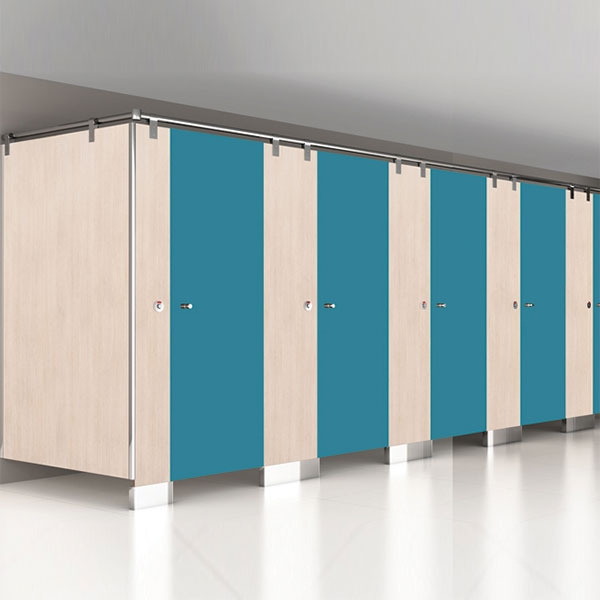The Role of Technology in Toilet Cubicles

In an era where technology influences every aspect of our lives, the restroom experience is no exception. Toilet cubicles have become the focal point of several technological innovations aimed at enhancing user experience and operational efficiency.
Smart Restroom Management Systems
Smart restroom management systems are emerging as essential tools for facility managers. These systems utilize sensors and IoT (Internet of Things) technology to monitor restroom conditions in real time. By tracking metrics such as occupancy levels, cleanliness, and even inventory levels for supplies like toilet paper and soap, these systems help ensure that restrooms are always ready for use.
For example, if a cubicle remains occupied for an extended period, maintenance staff can be notified to check in, ensuring user safety and comfort. This proactive approach minimizes user frustration and optimizes the cleanliness and readiness of facilities.
2. Touchless Technology for Hygiene
The push for enhanced hygiene, particularly following global health events, has led to the rise of touchless technology in restrooms. Features such as automatic soap dispensers, touchless faucets, and sensor-activated flush systems minimize the need for physical contact with surfaces, significantly reducing the spread of germs.
Moreover, some cubicle designs now include automatic doors that open with motion sensors, providing a completely touch-free experience. This focus on hygiene is particularly appealing in high-traffic areas such as airports, schools, and shopping malls, where users prioritize cleanliness and convenience.
3. Real-Time Monitoring and Reporting
Facilities equipped with monitoring technology can gather valuable data on restroom usage patterns. Analytics dashboards allow managers to track peak usage times, identify maintenance needs, and evaluate user satisfaction. This information not only aids in resource allocation but also informs decisions about future restroom design or upgrades.
Real-time monitoring systems can also alert staff to urgent maintenance issues, such as clogged toilets or low supply levels, ensuring that restrooms remain functional and well-stocked at all times.
Incorporating Green Design Principles
As awareness of environmental issues grows, the importance of green design principles in toilet cubicle manufacturing becomes increasingly significant. Facilities that prioritize sustainability can enhance their brand image while contributing positively to the environment.
1. Life Cycle Assessment of Materials
When selecting materials for toilet cubicles, businesses should conduct a life cycle assessment (LCA) to evaluate the environmental impact from production to disposal. This assessment helps identify materials that minimize ecological harm and allows companies to make informed decisions that align with their sustainability goals.
2. Encouraging Responsible Waste Management
Incorporating waste separation bins within restroom facilities encourages users to engage in responsible waste management practices. Offering clearly labeled bins for recycling, compost, and general waste can significantly improve the waste diversion rates within a facility.
3. Green Certifications
Facilities can enhance their reputation by obtaining green certifications such as LEED or BREEAM (Building Research Establishment Environmental Assessment Method). These certifications demonstrate a commitment to sustainability and can be a significant draw for eco-conscious consumers.
Future Trends in Toilet Cubicles
As we look to the future, several trends are shaping the evolution of toilet cubicles. Understanding these trends allows businesses to stay ahead of the curve and cater to changing consumer preferences.
1. Biophilic Design
Biophilic design integrates natural elements into built environments to promote well-being and reduce stress. In restroom facilities, this can include the use of natural materials, greenery, and natural lighting. Incorporating elements such as living walls or planters can create a more pleasant restroom experience, making users feel more connected to nature.
2. Modular Cubicle Systems
The trend toward modular cubicle systems allows for greater flexibility in restroom design. These systems enable quick reconfiguration based on changing needs, whether for seasonal events or shifts in user demographics. Modular designs facilitate efficient space utilization and can be adapted easily as the requirements of the facility evolve.
3. Integration of Mental Health and Well-being Features
As mental health awareness grows, facilities are beginning to integrate features that promote user well-being. This could include sensory-friendly designs that reduce overwhelming stimuli or features that provide users with a moment of solitude and relaxation. Sound-dampening materials and calming colour palettes can contribute to a more soothing restroom experience.
Conclusion
The evolution of Toilet Cubicle Manufacturers reflects broader trends in sustainability, technology, and user-centric design. By embracing these innovations, businesses can create restroom facilities that are not only functional and aesthetically pleasing but also supportive of health, safety, and well-being.
- Industry
- Art
- Causes
- Crafts
- Dance
- Drinks
- Film
- Fitness
- Food
- Games
- Gardening
- Health
- Home
- Literature
- Music
- Networking
- Other
- Party
- Religion
- Shopping
- Sports
- Theater
- Wellness
- News


